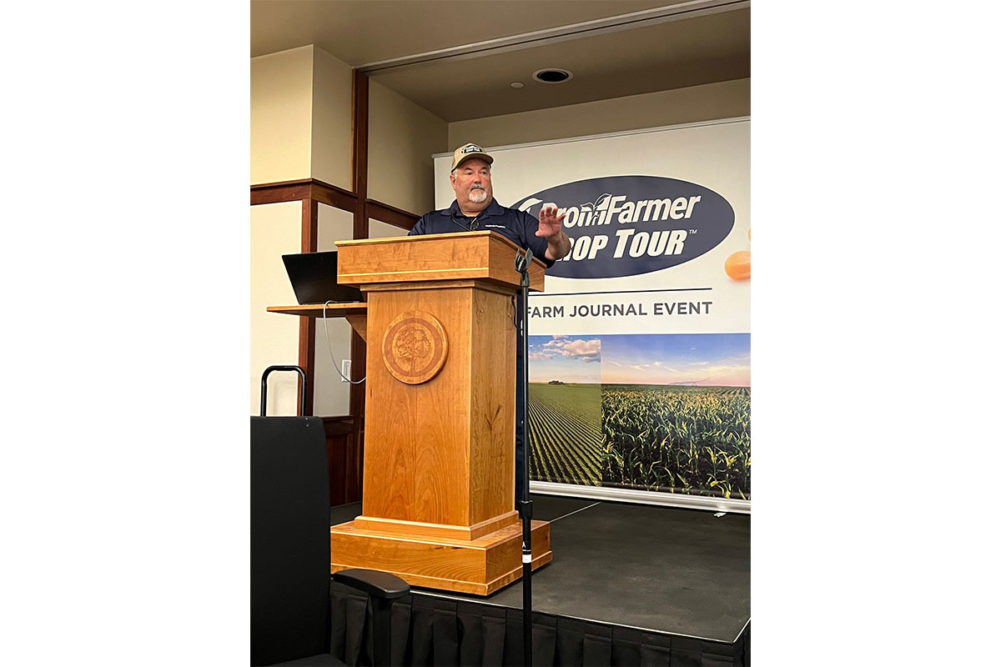NEBRASKA CITY, NEB. — On day two of the Pro Farmer Midwest crop tour, about 50 scouts on the western leg traveled across parts of eastern Nebraska while a similar number of scouts made their way across western Indiana and central Illinois. The record number of scouts for the tour braved 100-plus degree temperatures to provide a boots-on-the-ground look at the conditions of the US Midwest corn and soybean crops in the final stretch before harvest.
The second day tour results for Indiana soybeans estimated 1,310 pods within a three-foot square, up 12.35% from last year’s tour result and 6.59% higher than the three-year average. Scouts estimated the state’s corn yield at 180.89 bus per acre, up 1.71% from 2022 but down 1.54% from the three-year average.
Soybeans in Nebraska had 1,160 pods within a three-foot square, up 9.05% from last year’s tour estimate but down 3.01% from the average. Scouts estimated corn yield in the state at 167.22 bus per acre, up 5.48% from a year ago but down 2.78% from the tour’s three-year average for the state.
Variability was the oft used word to describe the samples collected from both states. In the Nebraska fields, scouts noticed healthy fields boasting a 200-plus-bu-per-acre corn yield and lush soybean plants while other areas just a few miles down the road had corn fields filled with a silage aroma and dried shanks with hanging ears and soybean plots showing evidence of white mold and sudden death.
“It’s been one of the most variable corn crops I’ve ever seen,” said Chip Flory, editorial director for Pro Farmer Farm Journal media. “It’s dicey, and these 10 days are critical to the soybean crop. But if we’re all in agreement that a little rain can help the crop, then we also have to agree that if we get the kind of conditions that we’re supposed to get in the next three days, then it’s going to hurt this crop.”
Several Nebraska corn fields displayed dropped ears from withered stalks, signaling it was too late for rain to help the crop in some areas.
At the dinner meeting where scouts gathered to share field assessments, one Nebraskan farmer explained that several farms in the eastern section of the state had suffered from drought, wind damage and ammonia burn earlier in the growing season, giving the crop a disadvantaged start to the season.
With the crop tour reaching the halfway mark, western scouts began their third day from Nebraska City, Neb., while the eastern scouts departed from Bloomington, Ill. Both groups will work their way into Iowa.





